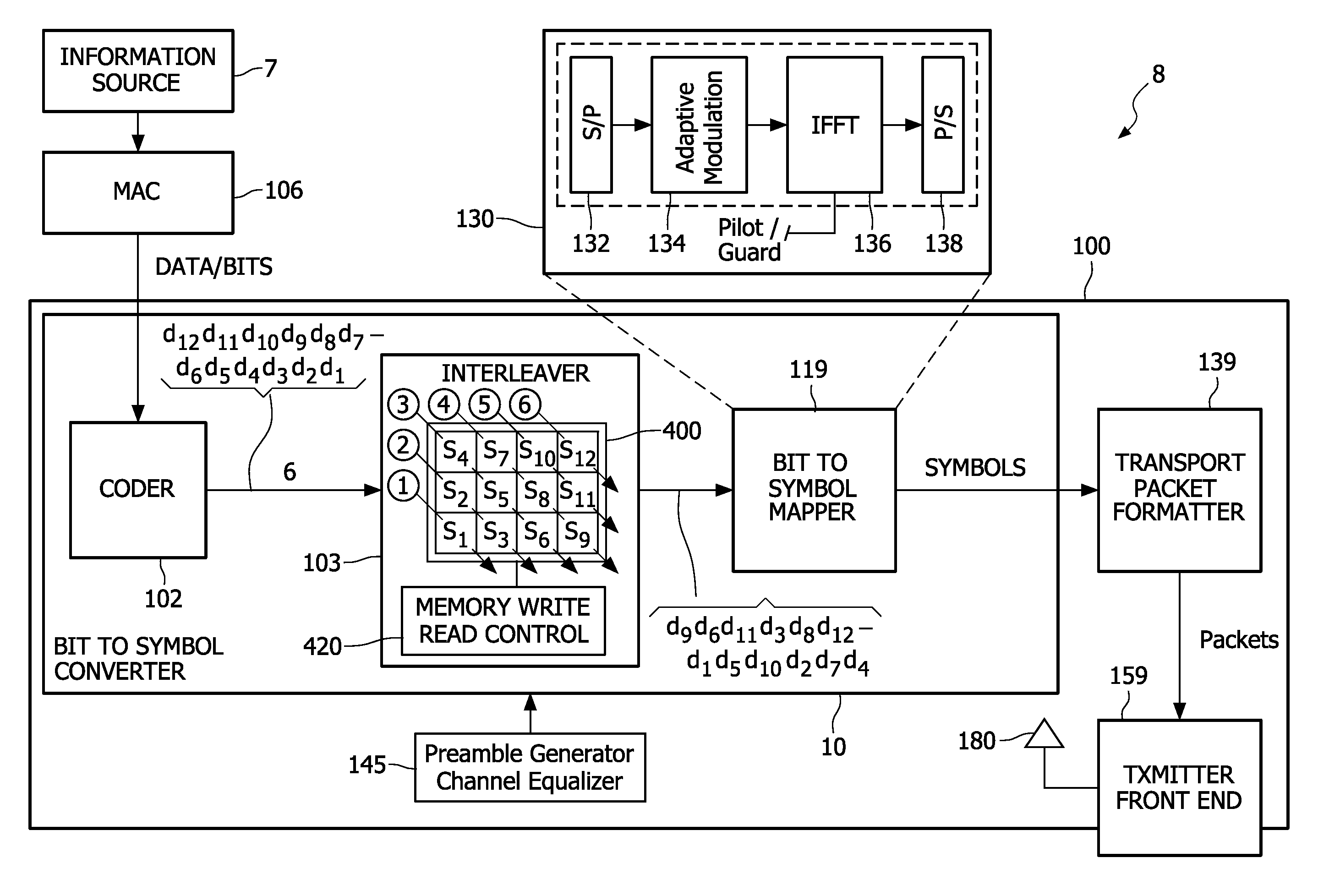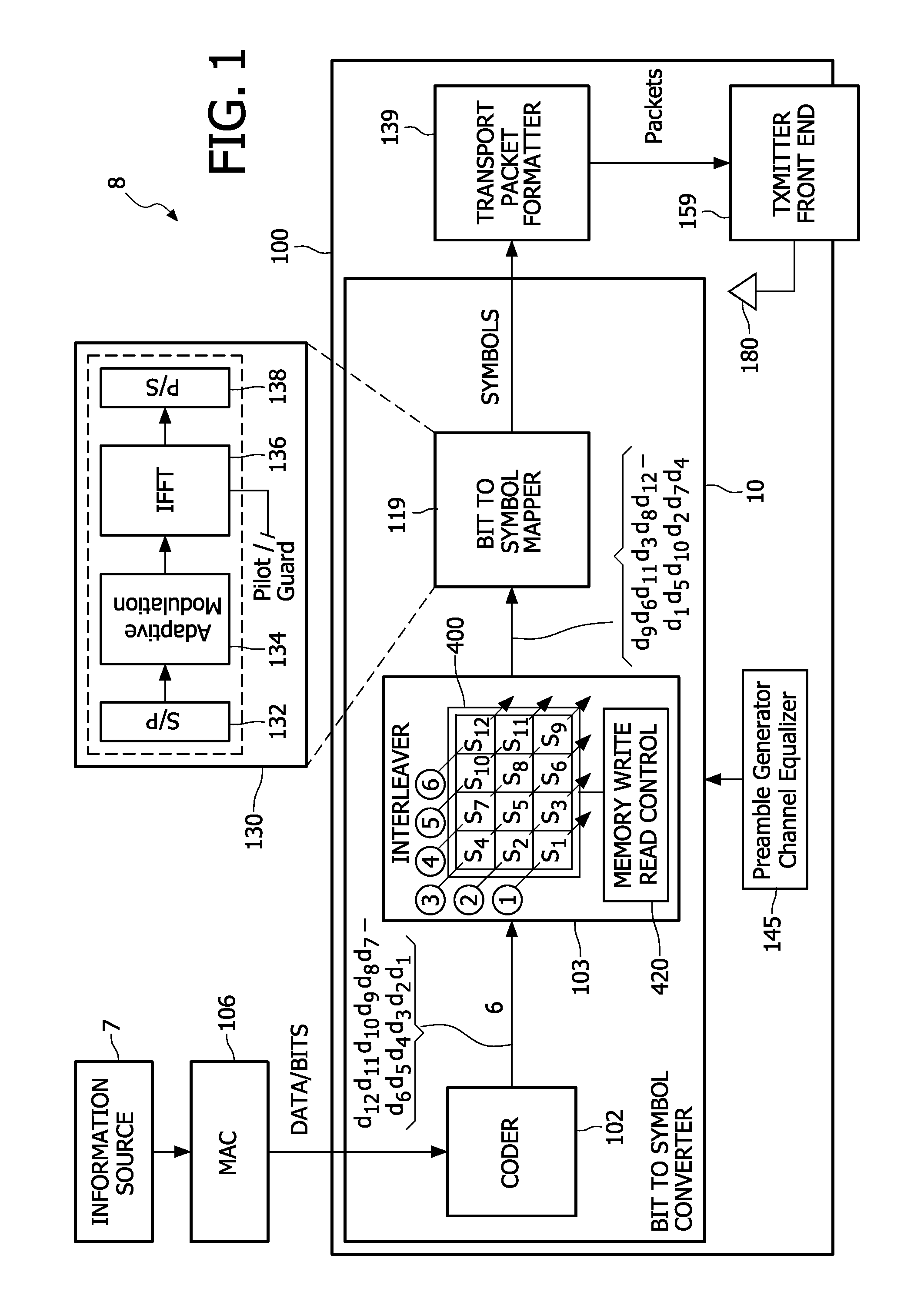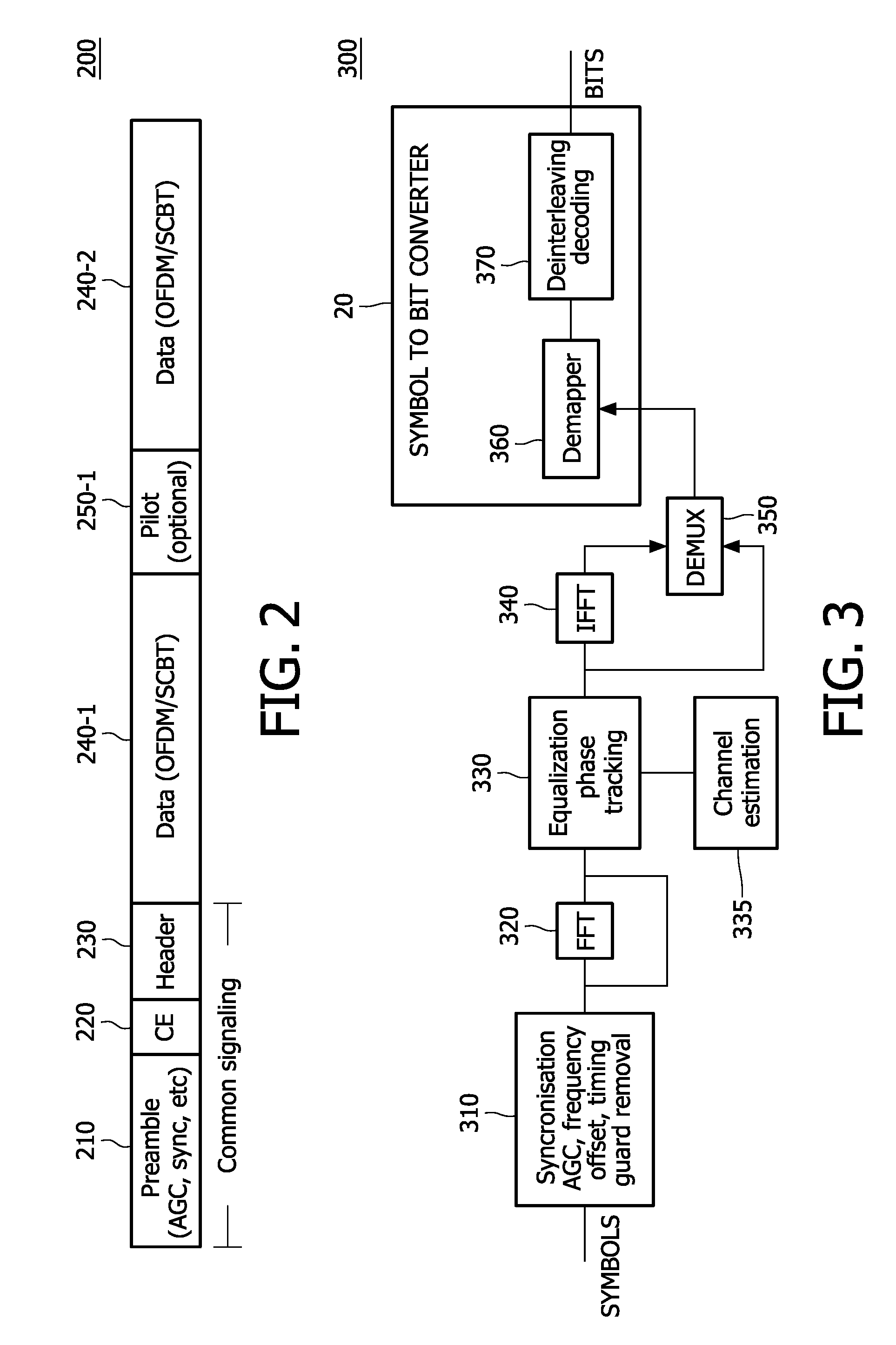System, apparatus and method for interleaving data bits or symbols
a data bit and symbol technology, applied in the field of data communication, can solve the problems of increasing the errors of received decoded bits, relatively expensive equalization schemes, and transmission symbols susceptible to noise and other channel disruptions
- Summary
- Abstract
- Description
- Claims
- Application Information
AI Technical Summary
Problems solved by technology
Method used
Image
Examples
example 1
INTERLEAVING METHOD EXAMPLE 1
Diagonal Write Operation
[0083]FIG. 5 is a flow chart illustrating steps of a method for generating a diagonal write sequence according to an embodiment of the invention. For ease of discussion, the method steps are described with reference to the write diagonals (451-456) illustrated in the interleaver apparatus of FIG. 4.
[0084]With reference to the flowchart of FIG. 5, the method begins by writing a first diagonal (451 of FIG. 4) with a first bit S1 of the bit sequence 490. First bit 490 is written to the cell defined by the last row N (in FIG. 4 last row N is row N) and the first column M-1 of memory 400. This cell defines a first diagonal 451 of memory 400.
[0085]The next successive bit S2 of bit sequence 490 is written to a first cell of a second diagonal (452 in FIG. 4). To define a first diagonal write direction (upper left to lower right as indicated at 407 of FIG. 4) for one embodiment of the invention, the second diagonal is defined by a first ce...
— example 3
CONVERTER—EXAMPLE 3
[0097]FIG. 13 is a functional block diagram of a bit to symbol converter 1300 according to an alternative embodiment of the invention. Bit to symbol converter 1300 comprises a serial to parallel converter (S / P), a plurality of encoders 1301-1313, a plurality of mappers 1305-1315, a parallel to serial converter (P / S) 1311 and an interleaver 1320. Bit to symbol converter 1330 receives a first serial bit sequence 1302 at an input of converter 1330. The bit sequence is provided to S / P 1304. S / P 1304 divides the sequence into a plurality of parallel bit sequences. For purposes of discussion three parallel bit sequences are illustrated at an output of S / P 1304 in FIG. 13. However, the invention is not limited as to the number of parallel bit sequences provided by S / P 1304.
[0098]Each bit sequence at an output of S / P 13-4 is provided to a corresponding encoder 1301-1313. Encoders 1301-1313 encode the bit sequences and provide encoded bit sequences at respective outputs. E...
— example 4
CONVERTER—EXAMPLE 4
[0100]FIG. 14 is a functional block diagram of a bit to symbol converter 1400 according to an alternative embodiment of the invention. Bit to symbol converter 1400 comprises a serial to parallel converter (S / P) 1403, a plurality of encoders 1405-1411, a plurality of interleavers 1413-1417 a plurality of mappers 1419-1428, and a parallel to serial converter (P / S) 1429. Bit to symbol converter 1400 receives a first serial bit sequence 1401 at an input of converter 1400. The bit sequence is provided to an input of S / P 1403. S / P 1403 divides the sequence into a plurality of parallel bit sequences. For purposes of discussion three parallel bit sequences are illustrated at an output of S / P 1403 in FIG. 14. However, the invention is not limited as to the number of parallel bit sequences provided by S / P 1403.
[0101]Each bit sequence at an output of S / P 1403 is provided to a corresponding encoder 1405-1411. Encoders 1405-1411 encode the bit sequences and provide encoded bit...
PUM
 Login to View More
Login to View More Abstract
Description
Claims
Application Information
 Login to View More
Login to View More - R&D
- Intellectual Property
- Life Sciences
- Materials
- Tech Scout
- Unparalleled Data Quality
- Higher Quality Content
- 60% Fewer Hallucinations
Browse by: Latest US Patents, China's latest patents, Technical Efficacy Thesaurus, Application Domain, Technology Topic, Popular Technical Reports.
© 2025 PatSnap. All rights reserved.Legal|Privacy policy|Modern Slavery Act Transparency Statement|Sitemap|About US| Contact US: help@patsnap.com



